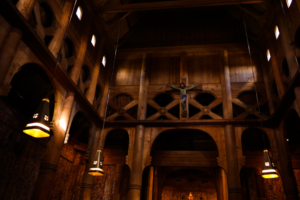Did You Know? (FWN36 Spring 2021)
20 May 2021Wooden stave churches, ‘stavkirker’, have stood for centuries, thanks to a specific technique used to prepare trees for harvest.
It’s thought there were once thousands of these types of churches in Norway, mostly built between the 12th to 14th centuries.
Those which still stand today owe their longevity in part to the natural preservative effect of resin. Old growth pine trees selected for construction of the churches had their branches removed in the spring but were left standing. As the still-live trees emerged from dormancy, the sap would rise as it did every year before. In the absence of branches, resin would emerge from the wounds. By the end of the growing season the heartwood would be saturated with resin. After the first frosts, the trees were felled, ready to be used in construction.
dormancy, the sap would rise as it did every year before. In the absence of branches, resin would emerge from the wounds. By the end of the growing season the heartwood would be saturated with resin. After the first frosts, the trees were felled, ready to be used in construction.
Timber prepared in this way is known as ‘ore-pine’ or ‘malmfuru’ in Norwegian. The enduring stavkirker are testament to the durability of this simple, natural method of preserving timber.
This article has been published in the Spring 2021 edition of the Farm Woodland News. Download a copy to access all articles. Subscribe to receive newly published editions via email by using the form here.
Sign up to the FAS newsletter
Receive updates on news, events and publications from Scotland’s Farm Advisory Service

